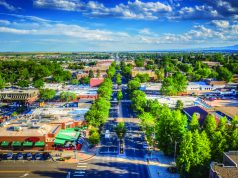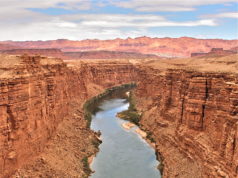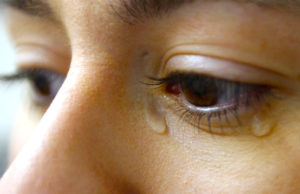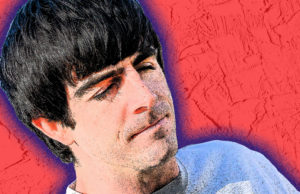
— It’s official: The extinction of the dinosaurs and a host of other
species 65.5 million years ago was caused by a massive asteroid that
crashed into the
havoc, an international team of researchers said Thursday.
The 7.5-mile-wide asteroid was traveling at a speed
about 10 times that of a rifle bullet when it hit, releasing a billion
times more energy than the
dirt and rock around the world, set massive wildfires, knocked down
forests worldwide, triggered massive tsunamis and earthquakes of
magnitude 11 or larger, and even caused parts of the continent to slip
into the ocean.
Those events wiped out more than half of all species
on Earth in what has been called the greatest extinction event of all
time. The species lost included not only the dinosaurs, but also the
birdlike pterosaurs, large marine reptiles and many smaller land and sea
creatures, clearing the way for the emergence of mammals as the
dominant life form on the planet.
All of this may sound familiar. In fact, the idea was
proposed 30 years ago by Nobel laureate physicist
the element iridium in sediments from what was then known as the K-T
boundary. This 65.5-million-year-old layer of Earth separates fossils of
the Cretaceous period from those of the Tertiary period.
Iridium is rare on Earth, but common in space, and
the Alvarezes proposed that a giant asteroid had hit the Earth,
producing the sudden decline in species diversity previously observed at
the K-T boundary — which is how the boundary got its name in the first
place.
Then, in 1991, researchers discovered a
120-mile-wide, 1.5-mile-deep crater called
the K-T boundary. Most considered it the smoking gun for the extinction.
In recent years, however, some scientists have
speculated about alternative causes for the extinction, arguing that it
could have resulted from multiple asteroid impacts or, more likely,
massive volcanic eruptions at the Deccan Traps in
To settle the question, European researchers decided
to assemble what
of Nature & Science called “a K-T boundary dream team,” a collection
of 45 internationally renowned scientists in a broad spectrum of
disciplines to analyze the possible causes of the extinctions. Funding
came from the National Science Foundation in
similar groups in other countries. Their conclusions will be published
Friday in the journal Science.
“The answer is quite simple,” Johnson, a co-author
and spokesman for the group, said in a telephone news conference. “The
crater really is the culprit.”
The aftereffects from the impact “shrouded the planet
in darkness and caused a global winter, killing off many species that
couldn’t adapt to the hellish environment,” co-author and Earth
scientist
in a statement.
Proponents of a multiple-impact theory have cited the
fact that there appear to be several distinct layers of comet debris
near the
crater and evidence for many species surviving after the impact, only
to go extinct later. But the research team concluded that those
anomalies were created by jumbling of strata when debris flowed back
into the crater after the impact.
There are now more than 350 sites around the globe
where researchers have studied the K-T boundary — now officially called
the Cretaceous-Paleogene, or K-Pg, boundary. (K is the traditional
abbreviation for the Cretaceous.) The sites that are distant from
evidence of only one impact.
Timing is the problem with the Deccan traps. A
variety of data show that there were three major pulses of volcanic
activity, one about 400,000 years before the K-Pg boundary, one about
200,000 years after and one sometime in the middle.
If the volcanism were the cause of the extinction,
“we would expect to see events in the biological world associated with
it, but we don’t,” Johnson said. In fact, the first pulse of volcanism
was associated with a slight global warming and an increase in
biological diversity.
Moreover, the amount of sulfur injected into the
atmosphere by the volcanoes — assumed to be the cause of their global
effects — was actually many factors of 10 smaller than that ejected in
the impact.
And what does it matter? “There are a lot of
asteroids out there now,” Johnson said, and it is important to know what
would happen if one were to strike the Earth.
—
(c) 2010, Los Angeles Times.
Visit the Los Angeles Times on the Internet at http://www.latimes.com/
Distributed by McClatchy-Tribune Information
Services.














